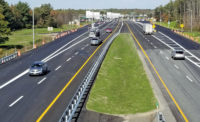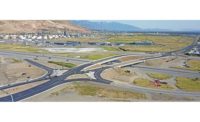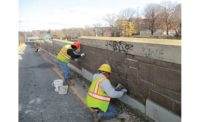Gold Run Road Reconstruction
Boulder, Colo.
BEST PROJECT
Owner: City and County of Boulder
Lead Design Firm: Michael Baker International
General Contractor: SEMA Construction Inc.
Construction Management/Consultant: Alfred Benesch & Co.
Subcontractors: CDI; Lightfield Enterprises; Martin Marietta; Rock & Co.
In September 2013, Colorado’s Front Range experienced record-breaking rainfall and unprecedented flooding, especially in Boulder County and Fourmile Canyon Creek.
The storm was classified as a 1,000-year event and declared a natural disaster by the governor and FEMA. The Gold Run Road reconstruction project for Boulder County was a part of the permanent repairs and stream improvements to address flood damage and improve existing drainage to mitigate future floods.
SEMA reconstructed two miles of the road, from 100 ft above the Cash Gulch crossing to nearly 600 ft above Salina Junction. Improvements included upgrades to a paved and unpaved section of roadway and better roadside drainage.
The project also featured design and replacement of multiple culvert crossings and channel improvements in the Gold Run drainage way. Those upgrades increased the capacity of stream and onsite drainage while maintaining a natural in-stream habitat.
Construction occurred in an extremely narrow right-of-way surrounded by historic homes, buildings and a mining road established in the 1800s. Blasting to install the box culverts took place 2 ft from the mining road and within close proximity to homes and buildings.
An extensive public information program included several community open houses and door-to-door outreach to keep residents apprised of upcoming construction activities and prepare them for the blasting. The precise timing of road closures was crucial to ensure minimal impacts for travelers.
When stream restoration began, the project team realized that the original design for the precast box-culvert wing walls would cross over into personal property lines and could affect nearby properties, many of which had historic preservation status.
Sticking with the original design would have required additional easements, adding more costs and time to the project. A redesign for the precast box culverts abridged the angles and modified the footings to eliminate the need for additional excavation and more right-of-way encroachments.
Back to "Annual Awards Competition Attracts the Most Entries in Its History"





